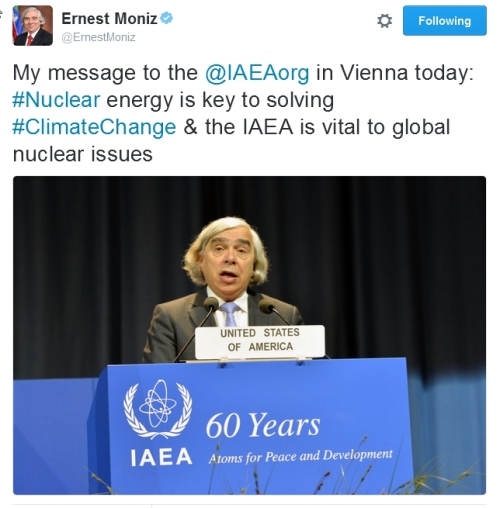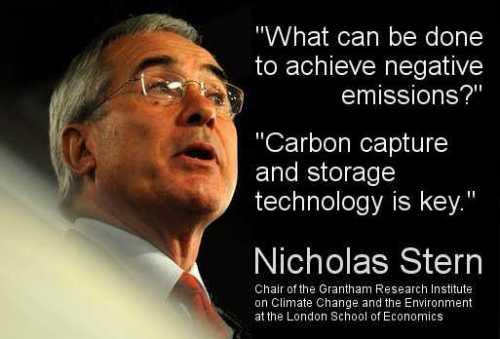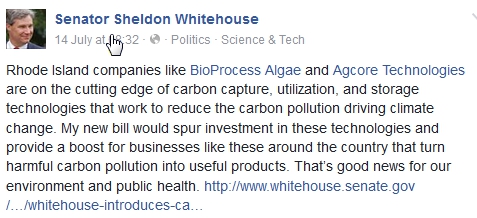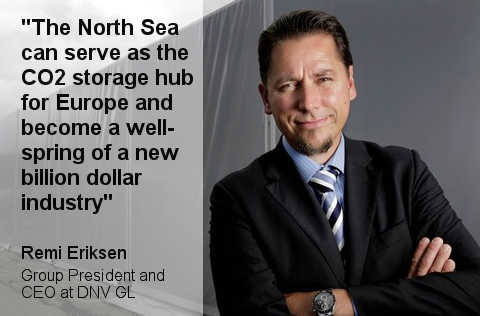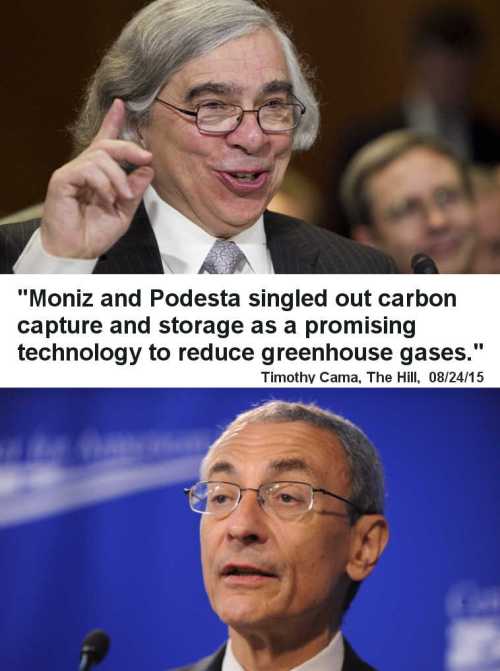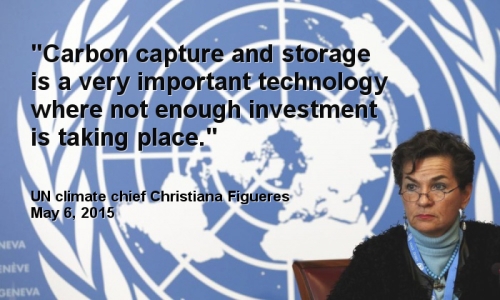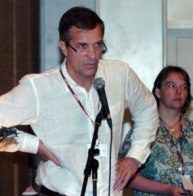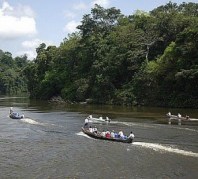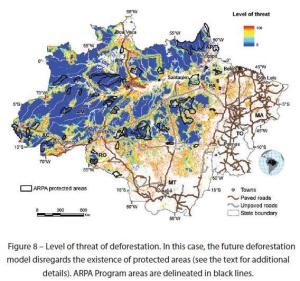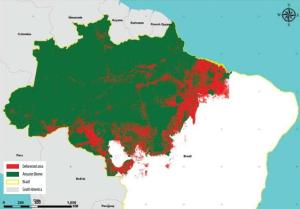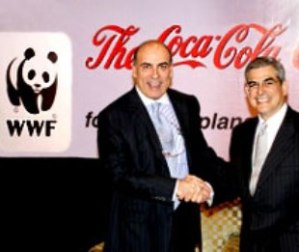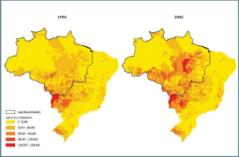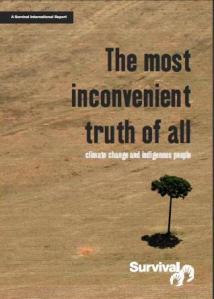May 20
20200
350.org / 1Sky, Foundations, Sierra Club
"Net Zero" 1Sky/350.org BECCS (bio-energy with carbon capture and storage) Beyond Coal CCS Center For American Progress Children’s Investment Fund Foundation Climateworks Foundation Clinton Global Initiative Data for Progress Design to Win Drax Enhanced Oil Recovery (EOR) Equinor European Climate Foundation Exxon Global Climate and Energy Project Green New Deal Greg Carlock Grist John Podesta Laurence Tubiana Michael Moore Nancy Pelosi Networked Hegemony New Power Networks NextGen Oil and Gas Climate Initiative Phillips 66 Planet of the Humans Rockefeller Brothers Fund Rockefeller Foundation Rolling Stone Sandler Foundation Sierra Club Steyer Taylor Center SumOfUs Sunrise Movement Teesside CCS Tom Steyer UNFCCC World Resources Institute WRI
Clinton to McKibben to Steyer to Podesta: Comments on Planet of the Humans by Michael Swifte
May 20, 2020
by Michael Swifte, Wrong Kind of Green Collective
“I think that the mainstream climate movement needs to collapse. It needs to end. And that the very comfortable organizers within that mainstream climate movement working in those NGO jobs – they need to fail. I think they need to be brought down. I think they need to have a little bit of hardship and a bit of suffering, and they need to create space for those historically oppressed groups.” [1]
— Tim DeChristopher, Transformation without Apocalypse – Episode #6 [SOURCE]
To understand the “damage” Bill McKibben claims the Planet of the Humans documentary has done to the climate justice movement you have to look at where 350 dot org began.
A fifty million dollar beginning
Bill McKibben has been in a dance with philanthropo-capitalists for more than a decade. He may not have been paid to be the face of 350 dot org but that doesn’t mean there wasn’t ‘corporate’ money around.
There was corporate and philanthropic money from the start. Bill Clinton announced 50 million from a “range of corporate and non-profit partners” for 1Sky at the 2007 Clinton Global Initiative. Bill McKibben was on the board of 1Sky in 2009 before it was merged with 350 dot org.
Watch this video and ask yourself how anyone could claim to be a leader of a ‘grassroots’ organisation or say that 350 dot org was ever a “rag-tag bunch of kids”. Watch the video.
Cory Morningstar has been tracking, analysing and cataloguing this stuff for 10 years, and by “this stuff” I mean the global capture of climate justice activism through #networkedhegemony at the behest of the non profit industrial complex #NPIC. Cory follows the money, analyses the networks, and interrogates the messaging.
#NewPower networks connect 350 dot org to a vast web of similarly funded campaigns and critically deliver opportunities to shape the Democratic party agenda. 350’s global expansion was built on replicating the organisations, institutions and campaigns that positioned it in the US and Canada.
Here are some links providing deep background on the #NewPower constructs and networks that empower the ‘climate cartel’.
‘Rockefellers’ 1Sky Unveils the New 350.org | More $ – More Delusion’
http://www.theartofannihilation.com/rockefellers-1sky-unveils-the-new-350-org-more-more-delusion/
‘SumOfUs are Corporate Whores | Some Of Us Are Not’
http://www.theartofannihilation.com/sumofus-are-corporate-whores-some-of-us-are-not/
Jessica Bailey at Rockefeller Brothers Fund actually used the word ‘merger’ to describe the union of the 2 campaign organizations incubated by the Rockefeller Brothers Fund.
“Bill McKibben, who has been a 1Sky board member and will chair the new 350.org board, once referred to 1Sky as the U.S. Embassy for 350.org and 350.org as 1Sky’s foreign legion.[] Matching 350.org’s talent for mass mobilization and online action with 1Sky’s advocacy and field campaign experience is tremendously exciting. Mergers are tough, and I applaud the leaders in both organizations for recognizing they’d be stronger together.“ [SOURCE]
Comments on Planet of the Humans
Planet of the Humans is a worthy documentary for it’s revelations about “green energy” and the failures of the climate justice movement. It is a testament to Jeff Gibbs’ extensive documentation and long commitment to environmental issues. I was pleased that it included the Climate Challenge segment with Karyn Strickler pitching a question from Cory Morningstar to Bill McKibben, and I was glad the film makers told the truth about Ivanpah and Robert F Kennedy Jr’s ties to fossil fuel giants.
Planet of the Humans is mostly about North America, and while it opens up a range of departure points for discussion of planetary issues, it’s a documentary about North American humans and westerners more generally, not the 100s of millions of blameless people who struggle to put food on the table. I found the discussion of the ‘population issue’ concerning given how little time had been given to putting global consumer markets into perspective, but documentary making is about access, and Jeff Gibbs has gained access to the world of “green energy” in North America. Michael Moore brings access of a different but equally vital kind, if you want to make a splash with a documentary.
Departure points are vital if we’re to make the most of what Planet of the Humans has highlighted as key issues. If the climate justice movement has failed and the environmental movement has been captured by billionaires, what else have they messed up? What are the other billionaire philanthropists doing to capture the efforts of environmental campaigners? What new diabolical schemes are planned to keep business as usual going?
People who feel inspired or moved by Planet of the Humans should look into biomass burning in Europe and the future plans for burying CO2 produced from burning biomass under the North Sea. American and European philanthropies have invested staggering amounts of money into organisations like the European Climate Foundation which is part of a global empire of similar organisations. The IPCC mitigation pathways are replete with the term BECCS (bio-energy with carbon capture and storage).
I watched Planet of the Humans after watching the Earth Day livestream discussion with Michael Moore, Jeff Gibbs and Ozzie Zehner. I hope that Michael Moore’s endorsement of Bernie Sanders and his plea that we put environmentalism into the hands of young people like the Sunrise Movement which was incubated by the Sierra Club is not the position of all three film makers. We can’t take Michael Moore’s words as a call to action so we are going to have to make our own calls to action.
Watch the full video of Karyn Strickler interviewing Bill McKibben on Climate Challenge here:
Departure point: John Podesta and a parallel climate campaign
In 2007 a plan was launched by 6 foundations. This plan #DesigntoWin produced the ClimateWorks Foundation, headed by John Podesta, which has spearheaded the incubation and funding of re-granting NGOs globally. ClimateWorks is perhaps the world’s largest recipient of climate philanthropy having received more than 1.3 billion USD since it’s inception in 2008.
John Podesta has a long relationship with the Clintons, both as politicians and philanthropists. In the various roles he has played – always as a Democrat – his focus has been on the future of energy and how to message a position on climate change for the party and for the global philanthropo-capitalist agendas.
Have a read of the Wikileaks ‘Podesta Emails’ that refer to Bill McKibben and/or Tom Steyer. Check out the ‘climate tick tocks’ for Hillary Clinton’s presidential campaign, the updates from philanthropist-billionaires like Tom Steyer and Henry Sandler, or Chris Lehane’s ‘big idea’ briefing that became the ‘Clean Power Plan’ (more business as usual). [SOURCE]
Podesta is always engaged with philanthropists. The Sandler Foundation helped establish the Center for American Progress which Podesta heads up. It helped fund the Australian climate justice regranting NGO the Sunrise Project and the US Beyond Coal campaign. Tom Steyer, a former Wall St banker, hedge fund manager and friend of Nancy Pelosi befriended Podesta who welcomed him into his Center for American Progress. Podesta encouraged Steyer to start his NextGen Climate Action Committee. It is likely that Steyer’s dubious defection from the ranks of billionaire fossil fuel investors and hedge fund managers was orchestrated under the advice of Chris Lehane. Steyer’s defection would see him join with McKibben and 350 at high profile events, and according to the Podesta emails they were in regular contact.
350/McKibben have been a foil for Democrat positioning on climate. The non profit industrial complex needed a global climate justice brand, and it needed to nestle it in a web of networks all connected by funded talking points and touchstone pieces in Rolling Stone and Grist. Granting and regranting NGOs pass over talking points in their transactions with grant recipients. Billionaires on every continent get to play the game.
Important background on the Design to Win plan here:
Background on the largely ignored mitigation plans of big oil & gas here:
https://www.wrongkindofgreen.org/2019/10/19/perfect-distractions-and-fantastical-mitigation-plans/
Departure point: The Steyer-Taylor Center and financing for CCS
Tom Steyer and his wife Kat Taylor fund the Steyer Taylor Center at Stanford. The center was headed from it’s founding in 2011 until September 2018 by Dan Reicher who has spoken in favour of financing to support carbon capture and storage on numerous occasions.
Dan Reicher is a Clinton administration energy wonk who spent some of the Obama years at Google. He’s the Founding Executive Director of the Steyer-Taylor Center for Energy Policy & Finance, but is now at the Stanford Woods Institute. Reicher explains how the future is all laid out for enhanced oil recovery with CO2 in this 2016 video. His slides include the prexisting CO2 pipeline maps for enhanced oil recovery.
A quote from the video:
“Carbon capture and sequestration is a key climate change strategy. You ask the IPCC, you ask the International Energy Agency.”
Reicher argues that with the CO2 pipeline infrastructure that is already in place and the right financial instruments “Full scale cost effective CCS” is deliverable.
Here is Reicher discussing private activity bonds and CCS. In the past he has spoken about the usefulness of master limited partnerships. Both of these financial instruments have been included in bipartisan bills currently before congress.
“It’s less about how to make it work technically these days but more about how to make it work financially,” [SOURCE]
Here is a quote from Reicher speaking at the Exxon funded Global Climate and Energy Project – Research Symposium in 2015.
“We really need to be using CCS for coal, natural gas, and a whole host of industrial carbon sources. But the costs are too high,” [SOURCE]
The Steyer-Taylor Center has partnered with the Exxon incubated and funded Global Climate and Energy Project which was ended in August 2019. Exxon are a founding member of the Strategic Energy Alliance along with Bank of America who support the – Sustainable Finance Initiative along with the Steyer-Taylor Center. [SOURCE]
Departure point: The Green New Deal and the failing phase out
Dan Lashof is the director of the World Resources Institute and the current COO of Tom Steyer’s NextGen Climate America and Nextgen Policy Center. In January Lashof co-wrote an opinion piece for the Houston Chronicle with Occidental Petroleum – Low Carbon Ventures president Richard Jackson. Oxy’s air capture plans support their enhanced oil recovery efforts and net zero targets through negative emissions from their planned air capture for CO2 enhanced oil recovery project. [SOURCE]
There’s a lot of interest in Oxy’s direct air capture plans which are supported by Carbon Engineering who have a long list of investors including Bill Gates, Murray Edwards, Oxy Low Carbon Ventures, LLC, Chevron Technology Ventures and BHP. [SOURCE]
The World Resources Institute provided 2 of the 3 Data for Progress researchers that developed the #netzero language that made it into the Green New Deal resolution. After the resolution came and went it has become clear that any sort of commitment to a fossil fuel phase out had been abandoned.
Important background on the ties between the World Resources Institute and Data for Progress here:
The Green New Deal has taken some of the pressure from McKibben/350. The Clean Power Plan was business as usual, but a little bit cleaner. The GND allows Democrats to appear to be taking a harder line on climate, but it’s a vehicle that has little legislative substance.
The Green New Deal must be failing to deliver a fossil fuel phase out if the director of the WRI, a so called ‘environmental advocate’, can share a by-line with a big oil executive to spruik a project that is the opposite of phasing out fossil fuels and seemingly nobody cares.
Here’s a quote from Dan Lashof regarding Oxy’s air capture for CO2 enhanced oil recovery project that clearly shows he’s not working for a fossil fuel phase out.
“On the other hand, to the extent that you’re expanding the total energy resources base and extending the fossil-fuel era, obviously that doesn’t solve the climate problem.” [SOURCE]
Data for Progress, New Green Deal Research Director and World Resources Institute US, Manager for Climate Action and Data, Greg Carlock referred to a WRI working paper on direct air capture in a recent blog post for WRI. The paper refers to Oxy’s DAC for CO2 EOR project as an example of where investments are increasing.
“Some companies interested in combining enhanced oil recovery with direct air capture are increasing investments. For example, Occidental Petroleum is partnering with Carbon Engineering to build potentially several direct air capture plants.” [SOURCE]
Departure point: Drax, BECCS and the Oil and Gas Climate Initiative
- On April 21, 2020, while the global oil market was in free fall, it was reported that a formal agreement had been signed confirming that Drax would be part of a consortium that included Equinor and Phillips 66 to develop “the world’s first net zero carbon industrial cluster” in Humber, UK. [SOURCE]
- Equinor are a member of the Oil and Gas Climate Initiative who are funding the Teesside CCS cluster. [SOURCE]
- Drax have been trialling BECCS (bio-energy with CCS) in the UK. [SOURCE]
- The lions share of the biomass burned by the Drax Group is from North America. [SOURCE]
- BECCS is in 3 of the 4 pathways offered by the IPCC working group on mitigation. [SOURCE]
Departure point: European Climate Foundation and industrial CCS clusters
Laurence Tubiana is a former French ambassador to the United Nations Framework Convention on Climate Change, and CEO of the European Climate Foundation.
“The phase when abatement of emissions from industry was considered impossible is over. Industry leaders are looking at totally disruptive technologies and visions.” [SOURCE]
I could try and explain how the ECF is positioned to shape the ‘climate solutions’ on offer, but Cory Morningstar has already done it perfectly:
“As “the core of the ClimateWorks system in Europe“, the ECF constitutes an integral part of the regional global network created by the San Francisco-based ClimateWorks. ClimateWorks works to oversee and shape climate-related policy work worldwide. Launched in 2008 – the same year as ClimateWorks) – the ECF is a regranting foundation like its US counterpart.” [Background on the European Climate Foundation]
3 key points about European Climate Foundation
- The European Climate Foundation commissioned Element Energy to prepare 2 reports. One report is on carbon capture utilisation and storage for gas, coal, oil and biomass, and the other is on liquid fuels (hydrogen) which will largely come from processing North Sea gas and sequestering the CO2 in geological storage or from electrolysis using electricity largely supplied from the grid that is ostensibly renewable.
- Element Energy prepared reports for the developers of Teesside CCS industrial cluster and for the Oil and Gas Climate Initiative which are funding the Teesside CCS cluster as part of their UN endorsed Kickstarter Initiative investments.
- It is clear that the European Climate Foundation which is part of the ClimateWorks empire under the Design to Win plan, are 100% in support of further entrenching fossil fuel extraction and use as part of their #NetZero
5 studies relating to BECCS and industrial clusters in Europe
2018: Study funded by the Oil and Gas Climate Initiative
‘Policy Mechanisms to support the large-scale deployment of Carbon Capture and Storage (CCS)’
“Element Energy and Vivid Economics have assessed policy mechanisms that could accelerate the deployment of Carbon Capture and Storage (CCS) to the scale required to meet climate change targets. The report begins by considering why, despite the central role that CCS plays in many deep decarbonisation trajectories, CCS has failed to build momentum. Having identified the problems, the work lays out policy and market mechanisms that could stimulate investment across the stages of deployment, acknowledges regional circumstances, and suggests principles that could help governments and firms to collaborate. Note that in this report CCS includes CCUS (carbon capture, utilisation and storage) in those cases where storage is permanent.'” [SOURCE]
2018: Study funded by the European Climate Foundation
‘Low-carbon cars in Europe: A socio-economic assessment’
“Hydrogen production for the transport sector is expected to be dominated by water electrolysers, steam methane reforming (SMR) and by-product from industrial processes (for example chloralkali plants). These sources form the basis of the production mix in this study. Other potential sources include waste or biomass gasification, or SMR with carbon capture and storage. These additional routes could potentially provide low cost, low carbon hydrogen, but are not yet technically or economically proven and have not been included in the cost assumptions below.” [SOURCE]
2017: Study funded by the European Climate Foundation and Industrial Innovation for Competitiveness (i24c)
‘Deployment of an industrial Carbon Capture and Storage cluster in Europe: A funding pathway’
“The 2020s will be a make-or-break decade for so many aspects of the low carbon transition. CCS in industrial plants needs to be part of the picture. Getting the financing right is clearly an essential first step. But we also need to establish the right frameworks for shared liability between operators and tackle some of the concerns the public and some policymakers still harbour over industrial CCS. This report shows the way for at least one of the hurdles related to CCS. I hope you enjoy reading it.” [SOURCE]
2011: Study funded by the One North East Regional Development Agency and the North East Process Industries Cluster.
‘Tees Valley CCS Network’
“An Element Energy study has looked at the logistics of implementing a shared CCS pipeline network in the Tees Valley to connect major CO2 emitters in one of the UK’s largest industrial clusters. By Harsh Pershad, Element Energy”[SOURCE]
2019: Study prepared for European Climate Foundation in collaboration with the Cambridge Institute for Sustainability Leadership, the Children’s Investment Fund Foundation, Climate-KIC, the Energy Transitions Commission, RE:Source,and SITRA.
‘Industrial Transformation 2050: Pathways to Net-Zero Emissions from EU Heavy Industry’
“BIOMASS WILL BE REQUIRED PRIMARILY FOR FEEDSTOCK Achieving net zero emissions for the economy as a whole will lead to multiple competing claims on scarce biomass re-sources. The use of biomass for fuel or feedstock can compete with alternative uses for land like food or feed production, conservation for maintained biodiversity, or as a ‘sink’ for CO2 emissions. Furthermore, once the biomass has been extracted, there are multiple competing uses, from simple combustion for heat or electricity generation (the largest use today) to the production of transportation fuels, or use with CCS for ‘negative emissions’ to offset remaining emissions in other sectors.” [SOURCE]
2017: Research paper prepared for Chatham House by independent policy analyst Duncan Brack
‘Woody Biomass for Power and Heat: Impacts on the Global Climate’
“Biomass is classified as a source of renewable energy in national policy frameworks, benefiting from financial and regulatory support on the grounds that, like other renewables, it is a carbon-neutral energy source. It is not carbon-neutral at the point of combustion, however; if biomass is burnt in the presence of oxygen, it produces carbon dioxide. The argument is increasingly made that its use can have negative impacts on the global climate. This classification as carbon-neutral derives from either or both of two assumptions. First, that biomass emissions are part of a natural cycle in which forest growth absorbs the carbon emitted by burning wood for energy. Second, that biomass emissions are accounted for in the land-use sector, and not in the energy sector, under international rules for greenhouse gas emissions.”
“Many of the models used to predict the impacts of biomass use assume that mill and forest residues are the main feedstock used for energy, and biomass pellet and energy companies tend to claim the same, though they often group ‘low-grade wood’ with ‘forest residues’, although their impact on the climate is not the same. Evidence suggests, however, that various types of roundwood are generally the main source of feedstock for large industrial pellet facilities. Forest residues are often unsuitable for use because of their high ash, dirt and alkali salt content.” [SOURCE]
End notes:
[1] Verbatim: “I think that the, the mainstream climate movement, needs to, needs to collapse. It needs to end. Um, and, and that the very comfortable organizers within that mainstream climate movement, ah, working in those NGO jobs, um, they, they need to fail. Um, I think they need to be brought down. I think they, they need to, ah, have a little bit of hardship and a bit of suffering, and they need to create space for, ah, for those historically oppressed groups.” Tim DeChristopher, Transformation without Apocalypse – Episode #6
[Michael Swifte is an Australian activist and a member of the Wrong Kind of Green critical thinking collective.]










